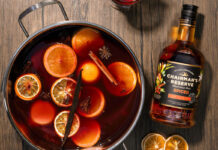Well-informed staff that know their drams can encourage sales of Scotch in bars

IN the land of whisky, a little knowledge behind the bar can go a long way.
That was the message from whisky firms, which told SLTN that consumer interest in the category can be piqued by passionate bar staff who can help them find the right malt or blend for their individual tastes.
Sarah Clarke, senior trade marketing manager UK & Europe at International Beverage Holdings, whose stable of malt brands includes Old Pulteney, said customers want to learn more about whisky and venue staff are important to that process.
She said: “I think there is an ongoing fascination with whisky, and drinkers want to explore the category and learn more about the brands and their stories.
“There’s a magical quality to the world of whisky that seems to endure, regardless of what other spirits come in and out of fashion.
“Whisky has always been a spirit with a story to tell, and bar teams need to be able to tell those stories to their customers.”
Mark Thomson, Glenfiddich ambassador to Scotland at William Grant & Sons, reckons education on the spirit for bartenders is vital.
He said: “Whisky can be a difficult category to navigate, so having bartenders who understand the liquid and the brand heritage and backstory is key.
“Therefore, staff training is crucial in order to guide consumers along their purchase journey.”
Scott Dickson, marketing manager at Loch Lomond Group, producer of the Loch Lomond range of whiskies, agreed.
“Staff knowledge is very important,” he said.
“Ensure your team knows the range you have and how best to sell it to the consumer and this can be done by engaging with consumers and asking some simple questions to see where they may wish to start their whisky journey.”
Ensure your team knows the range you have and how best to sell it to the consumer.
Teddy Joseph, whisky specialist at Edrington-Beam Suntory, distributor of The Macallan, said the firm had noticed more bartenders taking spirits training in order to speak knowledgeably about the spirit to their customers.
He said: “The role of the bartender is also important in helping to influence consumers’ decisions at the bar.
“Recommendations from an expert go a long way, and when a customer can see whisky being sold, they are much more likely to consider it as an alternative to their usual tipple of choice.”
However passionate and in the know staff are, it’s only one factor in promoting a good whisky offer; a solid range of whiskies is fundamental.
And there are two ways to split up a whisky range to make it more accessible and cover all the bases for consumers: taste and origin, according to Dickson of Loch Lomond Group.
He said: “Stocking a range of whiskies that covers flavour and the five regions [of whisky production] not only helps Scotch to stand out on the gantry, it also enables licensees to cater for all tastes.
“As a minimum, we recommend covering the main flavour characters found in single malts from unpeated to peated and sherry to bourbon cask finish.”
The approach of splitting malt whiskies up in a range by the classic regions of malt production in Scotland was seconded by Ian Cumming, commercial director at Inverarity Morton.
He said: “The best way is to tackle the topography of whisky first before drilling down to deciding which distilleries to stock, it all depends on whether you’re appealing to a connoisseur, a novice or a mix of both.”



















